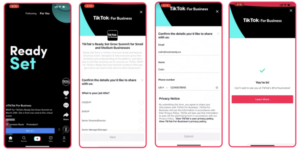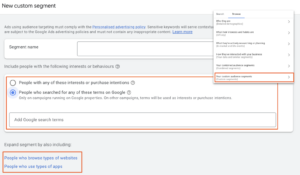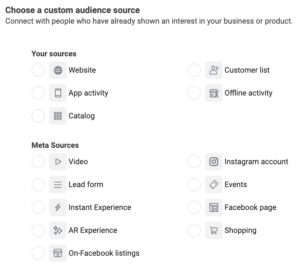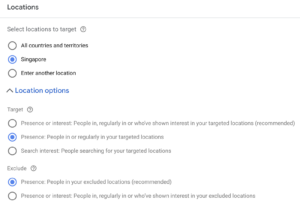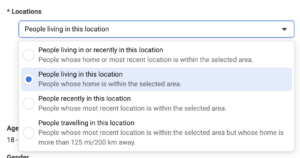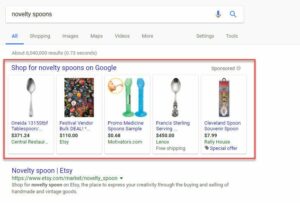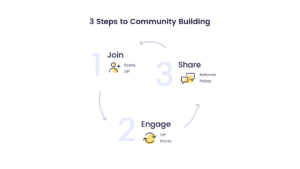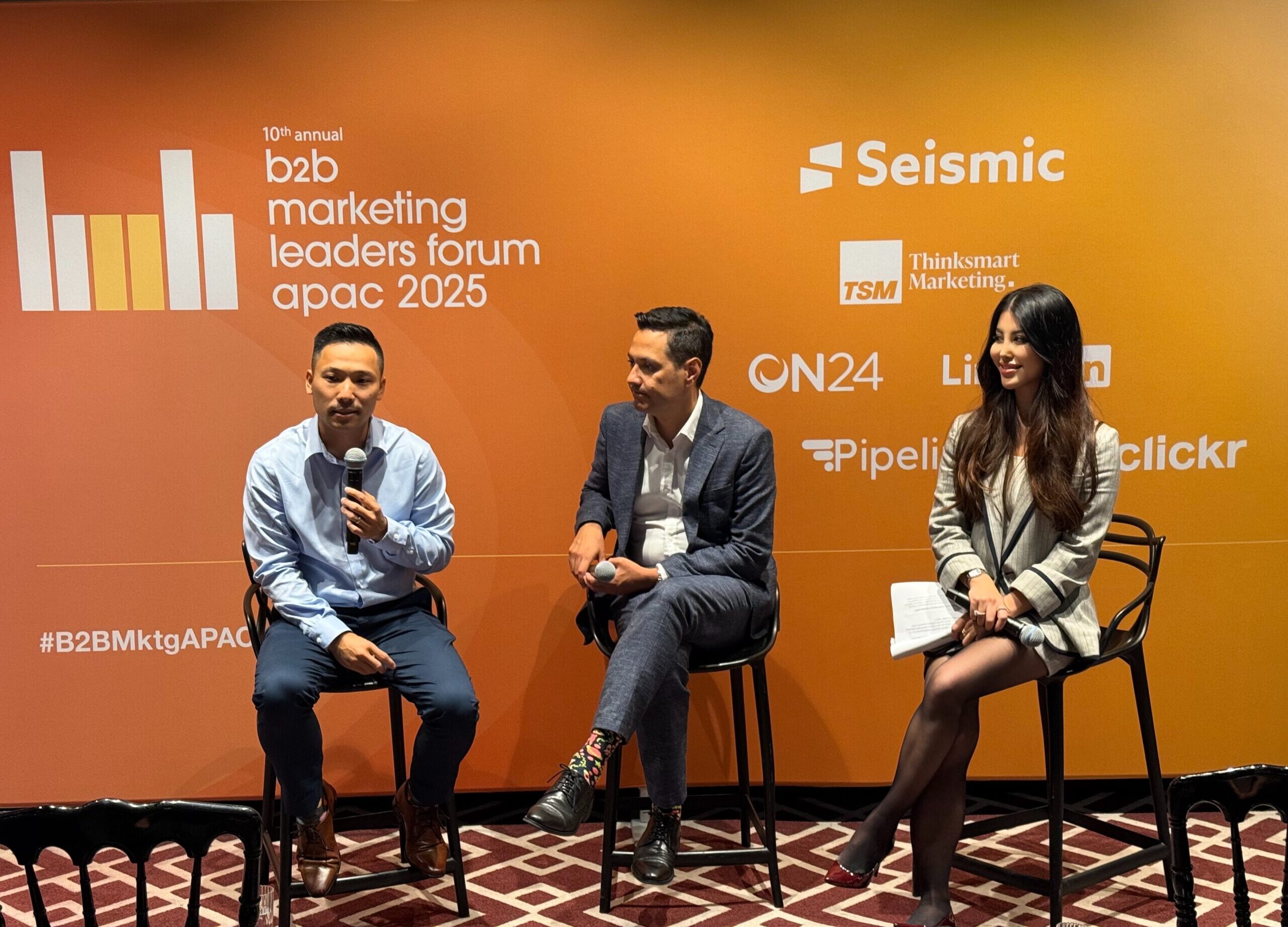Lead generation is a critical part of business development – and an increasingly uphill task considering the landscape and climate of the market today.
As technology advances at a breakneck pace and consumer preferences become more assertive, consumer behaviour has shifted (e.g demand for user data privacy options, usage of artificial intelligence tools to find answers & solutions etc) and regulatory structures have been overhauled (e.g. GDPR etc) to accommodate these.
In turn, tech tools and platforms have adapted to these new regulations, often in stages and without much prior notice, both in terms of changing / removing functionality previously relied upon by marketers, as well as introducing new policies for how their tools can be used or the purposes they can be used for.
So what does this all mean for your lead generation efforts here in Singapore for the rest of 2023? You can adopt these key lead generation strategies and tactics for your business this year:
1. Use Lead Generation Ad Formats
Image from Net Imperative
Lead generation is now a common objective available directly on several ad platforms. Lead generation ad formats are forms or landing pages that are integrated natively into the specific platform so audiences can seamlessly submit their details to you on the platform without waiting to be redirected to your website.
You can collect leads directly on a variety of platforms — such as social media (e.g. TikTok Lead Ads, Facebook Lead Ads etc) and search engines (e.g. lead extensions on search ads) to encourage users to submit their contact information in exchange for a valuable or time-limited offer, such as a discount code, e-book, or free trial.
Using lead generation to target specific audiences is a huge advantage. Apart from showing your ads to audiences who are most likely to be interested in your products or services based on their interests or placing your ads on relevant content that users are browsing, consider using some of these advanced targeting options:
- In-market Audiences – Target people who are actively researching for (or in the market for) solutions, products and services like yours via Google Ads
- Custom Audiences (Google Ads) – Target people who fit certain criteria (e.g. having certain interests, commonly visit your competitor or other complementing websites/apps etc) via Google Ads. Since Google Ads is discontinuing similar audiences as of May 2023, custom audiences are now your next best bet in reaching audiences who are similar to your best customers. Custom segments are also key in bridging search intent with display and video placements – so you can now use display/discovery and YouTube to target people based on terms that they have searched before and potentially still targeting high-intent audiences on cheaper placements outside of paid search.
- Owned Audiences – This is one of the more powerful means of targeting – where you can target people based on their past interactions with your digital properties and your business. Pixels like the Meta Pixel / Conversions API and Google Tag / conversion events labelled in Google Analytics 4 allow you to create audiences who have performed certain actions on your website (e.g. viewed a page, made a purchase etc). You can then target these high-intent audiences who are already familiar with your brand and product/service offering. Conversely, if your existing customers have been complaining about seeing your ads even after they have made the purchase, you may want to consider excluding your owned audiences instead – so you conserve your budget to reach new prospects instead of annoying your existing customers with further ad fatigue.
- Custom Audiences (Facebook / Meta Ads) – Custom audiences on Facebook Ads Manager allow you to use your owned audiences above, while also consolidating audiences from certain Meta sources. This means that you can target (and even exclude) audiences who have already interacted with your videos, Instagram account, Facebook Page, Instant Experience and even past lead forms. Here are some examples of strategic moves you can make:
- Retarget audiences who have already watched your Facebook video and are now more familiar with your product offerings with a higher probability of responding to your lead form
- Exclude audiences who have already submitted a lead form so you can reach new prospects
- Retarget audiences who have viewed your lead form but not submitted
Another advantage of ads is how you can specifically track how effective each of the target audience groups, ads and even lead forms are in driving your lead generation objectives. Detailed ad analytics with metrics like number of clicks on ads, form submissions, submission rate etc are directly available on these ad platforms. Additionally, success metrics can also be specifically attributed to specific creatives, ads and targeting though UTM tracking and viewed on web analytics and customer relationship management (CRM) software, for further analysis on the quality of marketing qualified leads (MQLs) based on how many of them turn out to be sales qualified leads (SQLs) as well. These functions arm businesses like yours with the necessary data-driven insights upon which you can optimise your campaign in real-time to achieve better results.
If you are already running lead generation ad campaigns, you should also check that your intended targeting is accurately set. A common mistake made by businesses is geographical targeting based on both physical presence and interest (i.e. people who are located outside of your targeted territories but researching on your targeted territories), which can squander advertising dollars on people who are physically outside of your targeted locations.
For example, imagine a Singaporean company that provides cleaning services for homes. They may intend to strategically target their ads at audiences who are not only interested in home cleaning, but are also physically close to their place of business.
If the “Presence” option is not specifically checked, this cleaning service may end up advertising to people who are interested in home cleaning services, but live too far away to become consumers. Always explore additional advertising options – these may be crucial to ensure that your ads are only shown to people who physically placed to become customers.
Targeting consumers purely based on their geographical location, however, might not be adequate. As travel restrictions loosen in many regions of the world, more people are beginning to travel. As a result, your location-targeted advertisements may be seen by users who are not necessarily residents of the location, nor interested in purchasing specific items / services from a business in the foreign land that they are in.
Platforms like Meta / Facebook ads have a different form of location targeting that allows you to differentiate audiences based on not just their physical location, but also their residency.
If you are advertising for big-ticket items or products that require a longer time for customers to make a purchasing decision, you should be targeting only people ‘living in’ the location that you serve, instead of merely selecting an audience based on their most recent location. This allows you to continue speaking with your resident audiences who are more likely to be interested in and capable of making a purchase, even if they are travelling at the moment.
These little tweaks in areas frequently missed are key to higher conversion rates, a higher return on investment, and more sustainable growth over the long term.
2. Use Search Advertising Wisely
Image from WordStream
Reach the high-intent audiences directly at the point of their need by using search advertising (or search-based advertising) wisely. This entails using custom affinity audiences, allocating and adjusting budgets prudently, bidding for relevant long tail keywords, using ad extensions liberally and potentially narrowing targeting by demographics/in-market behaviours if relevant.
Earlier, we covered how you can use custom audiences to target people who have made recent relevant searches on cheaper mediums like display, discovery and video – but these custom audiences are only available after the user has completed their search and may already have found and pulled the trigger on what they are looking for.
If you intend to meet them directly as they are performing a relevant search, you should be prepared for the pricier world of pay-per-click (PPC) search.
Be prepared to enter with a higher budget – just so you can learn more about your audiences’ search patterns. Use the keyword planner to determine what audiences are searching for and start off with a mix of keywords that target higher purchase intent (e.g. targeting ‘laptop sale singapore’ vs just ‘laptops’ etc) and keeping some of them on a broad match. A higher starting budget allows your ads more exposure so when you check your ‘Search Terms’ report, you will be able to view the wide range of search queries that your actual audience searches for. These search queries may surprise you – your audiences may refer to your services in ways that you had never considered, and you may want to incorporate these new search terms into your targeting.
As you optimise your campaigns over time, you would want to streamline your keyword targeting to include the following types of keywords:
-
- Long-Tail Keywords – typically longer than 3 words and very specific or precise (e.g. ‘buy midnight blue macbook air’ etc) which help you direct users at a higher level of consideration to more specific pages of your website
- Product Defining Keywords which explain and describe the product sought – these searchers are already entering the Purchase stage (e.g. ‘lightweight gaming laptop’ etc)
- Commercial Intent Keywords – Searcher is quite serious about buying and includes product-specific parameters (e.g. ‘best laptops under $3000’ etc)
- Transactional Intent Keywords – Searcher is just about to place an order and is comparing products across multiple stores for best deal (e.g. ‘best Apple Macbook shop’ etc)
You may also want to consider picking out Short-Term Fresh Keywords – recently hyped keywords that have exploded in search demand, but are not expected to sustain searchers’ interest in the long term (e.g. ‘11.11 laptop sale’ etc). These can be put aside for use in seasonal campaigns.
As the campaign progresses, you can also begin weeding out generic short tail keywords and informational keywords (e.g. ‘what is a laptop’ etc) to reach a more decisive audience.
Secondly, use ad extensions generously and provide content to support them, especially based on the product defining keywords that you have observed in your Search Terms report. Ad extensions, which include site links, callouts, and structured snippets, are extra pieces of information that can be displayed with search ads to increase their real estate on the Search Engine Results Pages (SERPs) and provide searchers with more relevant information to consider. This is also where lead extensions can be used – to collect leads directly off Google search without having to redirect the user to your website and risk losing them in the process.
If you are still seeing high amounts of traffic and low clickthroughs or conversions, you should consider additionally narrowing the targeting of your search ads by demographics or in-market behaviours – to only reach sub-segments of searchers. For instance, if your business offers products or services that are typically used by a specific age group or gender, you can narrow their targeting to limit your ads only to searchers who happen to fall within those demographic parameters.
3. Avoid being 100% Reliant on Ads
Ads may be useful for generating leads but since almost 31% of people in Singapore use some form of ad blocking software, this also means that ads are likely unable to reach 31% of your target audience. Instead of going all-in on paid advertising, we recommend diversifying your lead generation strategy.
Organic content, such as social media posts and blog articles, can be a powerful strategy for lead generation. Businesses develop a connection with customers by producing content that adds value and fosters trust – a firm foundation upon which to attract leads.
Image from BuySellAds
Content syndication, which is the process of republishing your organic content on other content websites to reach a wider audience, allows businesses to increase their brand awareness and generate leads from a wider audience. When using content syndication, always ensure that the syndicated content is relevant and provides value to the readers of the publication – which also means that these publications should be astutely curated to be valuable sources of relevant traffic.
4. Put Your Brand Out There and Build Trust & Confidence in This Climate of Fear
New digital platforms are hitting the market ever so often, but not every platform is worth developing upon. Attune yourself to the media consumption patterns of your target audiences and learn to spot growing platforms and ride the hype, for example, TikTok, XiaoHongShu, and Lemon8 have seen exponential user growth in recent years and can be effective platforms on which to reach a vibrant, engaged community.
Simply being on a platform that is growing is not enough. The content you create for these platforms should be digestible and informative, cleanly segmented and easy to consume. This could mean condensing or summarising longer-form content into smaller, more digestible chunks that can be seeded along the conversion funnel as audiences and website users get more and more serious about their purchase.
According to Lucidpress, a consistent brand presentation has been seen to increase revenue by 33%. To leave a lasting impression on customers, both current and potential, keep your brand’s voice consistent across all platforms, even as you grow your digital presence (e.g. website, marketplace listings, social media, chat apps, etc.). Naturally, you can make minor changes to the tone of voice and the subjects covered as you switch between platforms, depending on the general content styles of these platforms and the content preferences of their primary consumers.
Keeping abreast of the latest news in your industry, as well as the trends, topics and concerns that your audience is actively discussing prepares you to release timely, valuable and engaging content that your audience will care about. Over time, this can build you a strong social following, and provide your brand with the perceived trust that can generate leads for your business expansion.
5. Remember That Your Customers Are Key To Your Brand
Image from Smile.io
Building a great, strong brand community can fuel your business’ growth – and it is always more affordable to retain existing customers than to acquire new ones. As reaching new audiences and converting them into followers and customers becomes increasingly expensive and challenging, we encourage you to look to your existing followers and customers for ways to improve their Lifetime Value (LTV) – by building brand advocates among them.
One way of humanising your brand and tapping on your existing followers / engaged audiences is by designing repurposable material to facilitate their creation of User Generated Content (UGC), especially on social media. This allows your existing followers and customers to spread the word about your products and services for you in a fun and engaging setting.
Likewise, monitoring your customers’ satisfaction on your own brand website through surveys facilitated by user experience management tools on CRMs can collect feedback to help you determine what content or sales and marketing efforts appeals to your customers, and what does not.
While this helps you to spot customers who are about to churn (and intervene with improved customer service to increase their customer satisfaction back to healthy levels), you can conversely consider hopping in at the points of delight with an offer to refer a friend and an incentive to do so (e.g. additional rewards points or vouchers etc), to improve your lead generation efforts through word of mouth referrals.
On that note, your existing customer base is also a key source of reference for other potential prospects when it comes to reviews, since:
- 93% of users allow online reviews to impact their purchasing decisions
- 82% of consumers say the content of a review has convinced them to make a purchase
- 92.4% of users are more likely to purchase a product or service if they have been able to read a trusted review about it
Incentivise your customers to leave reviews and testimonials for you – each review and testimonial, whether good or bad, is a piece of social proof that real people are purchasing from your business. If the review is good, needless to say that potential prospects will be compelled to speak with your sales team with the promise of a similar good experience – just remember to leave your thanks to the customer for taking the time to leave the review. When negative reviews do come in, it is your chance to prove your organisation’s credibility and willingness to make things right, openly and with answerability. These actions too can build the confidence of potential prospects to explore opportunities with your organisation.
With all that said, if you are using your website as a platform for lead generation, you should (at the bare minimum) ensure that your website is not left behind with the sun-setting of Universal Analytics (UA).
Avoid losing precious insights into how your users are interacting with your website (and how different portions of your website are converting existing users into leads by hopping on Google Analytics 4 (GA4) right away – setting in place detailed tracking of events with relevant triggers to build a comprehensive picture of whether your brand, its content, and its touchpoints are resonating with your audience and impacting your lead generation efforts.
Use GA4 to better customise the visualisation of your sales funnels and track the performance of your web assets at each stage of the funnel. This can help you quickly identify areas where leads are dropping off and optimise those stages to improve conversion rates.
With the latest marketing tools, such as GA4 and Ads Data Hub, one can easily consolidate and analyse various consumer data signals with machine learning and put your marketing budget to work in smarter ways.
Conclusion
As a lead generation marketer in 2023, it is crucial to get a firm grasp on and the full picture of how your users are behaving (and what they are expecting) across a variety of platforms and devices for a comprehensive view of the customer journey.
Data, analytics and advertising platforms have changed and so have our 2022 audiences. Adopt a comprehensive digital lead generation strategy across a mix of relevant tools and channels and keep an eye out for any changes to the landscape, especially in areas and tools linked to user data privacy, which many platforms will settle into this year.
Make it your priority to collect sufficient, accurate data that identifies the blockers to lead nurturing (e.g. page elements with poor interaction rates, content with poor/negative engagement etc) to stages in the funnel that are resulting in low conversion rates.
Then fix these conversion rates with better content and more compelling sales pitches.
Does your brand need a boost to improve its lead generation, CRM, organic content, search presence, or TikTok efforts? Speak with Clickr today!
We hope this has been insightful and enjoyable! We would also love to hear your feedback or suggestions – do share them with us.

